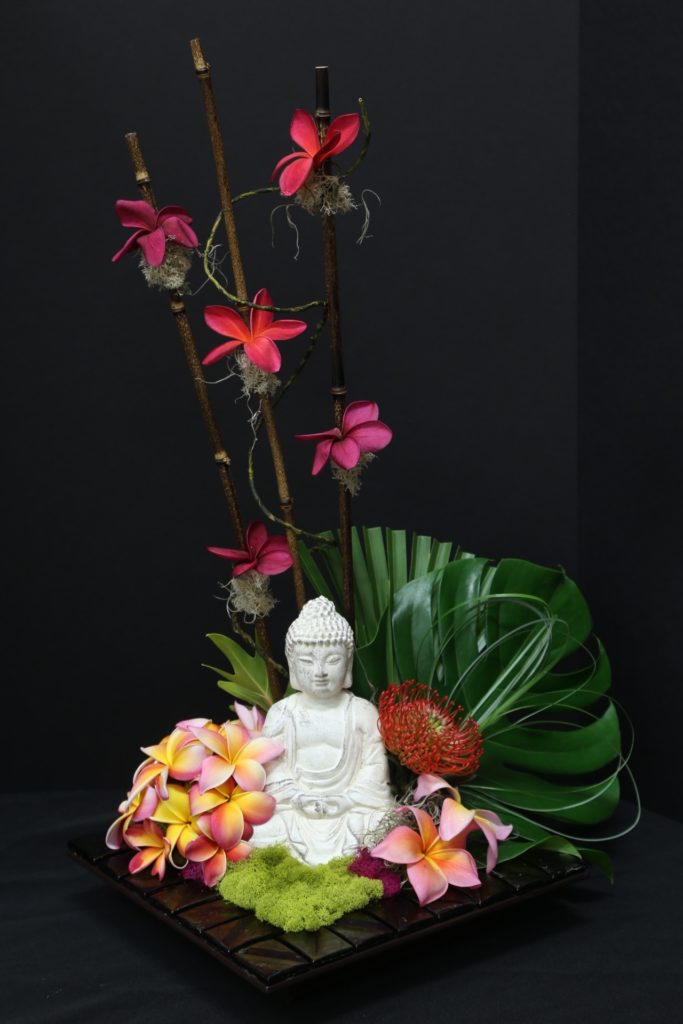Display Class I
Plumeria Arrangements

The arrangements must be multi-bloom, in a vase or container, made of natural, non-endangered materials. There is a limit of two arrangements per person, one large, one small.
There are TWO classifications of arrangements: Large (18x18x30) and Small (18x18x12) *(LxWxH)
If you pre-register for this section you will be reserving a space. If you DO NOT preregister, we cannot guarantee a space for your entry because of table and room limitations. ** Arrangements must be picked up at 2PM on Sunday, or they will be disposed of.
Flower Show Arrangements Registration Form:
Download Flower Show Display Class tag:
Equipment:
Use the best pin-holders and clippers you can find. Oasis is good for certain containers. Sticky tape, wire and wood pics come in handy. Plain containers are easier to work with in the beginning. The arrangements must be multi-bloom, in a vase or container, made of natural, non-endangered materials. There is a limit of two arrangements per person, one large and one small.
There are TWO classifications of arrangements: Large (18x18x30) and Small (18x18x12) *(LxWxH)If you pre-register for this section you will be reserving a space. If you DO NOT preregister, we cannot guarantee a space for your entry because of table and room limitations. ** Arrangements must be picked up at 2PM on Sunday, or they will be disposed of.
Elements of Design:
- Space: Open areas in a design. Three-dimensional and spaces within plant material and components established by designer.
- Color: Visual sensations, reflected light, color hue, lightness or darkness, intensity or dullness.
- Light: Illumination by natural or artificial means affecting shadow, color and visibility.
- Line: Linear form establishing the structural framework of the design. Creates visual path within a design.
- Form: Contour of three dimensional material – open or closed, regular or irregular.
- Size: Visual size of design – large, small, delicate, bold, heavy, etc.
- Pattern: Combination of lines, shapes, solids and spaces. Color and use of plant material, container and background.
- Texture: Surface finish of material – rough or smooth, course or fine, dull or glossy, hard or soft. Variety adds interest, avoids monotony.
Design Principles:
- Balance: Visual stability- equal weight on each side (may be symmetrical or asymmetrical).
- Rhythm: Dominant visual path through a design, suggesting motion by the ·repetition of shape, color or size of materials. Larger at bottom, smaller at top.
- Proportion: Relationship of materials to each other. Not too large or too small – not too little or too much in comparison to something else.
- Scale: Keeping all elements in good size – one to the other. Design should be at least 1 1/2 times the container height or width. Dominance: A part of the design that implies greater importance, while other elements are subordinate.
- Contrast: Opposite or unlike qualities that emphasize differences in elements and materials used in design